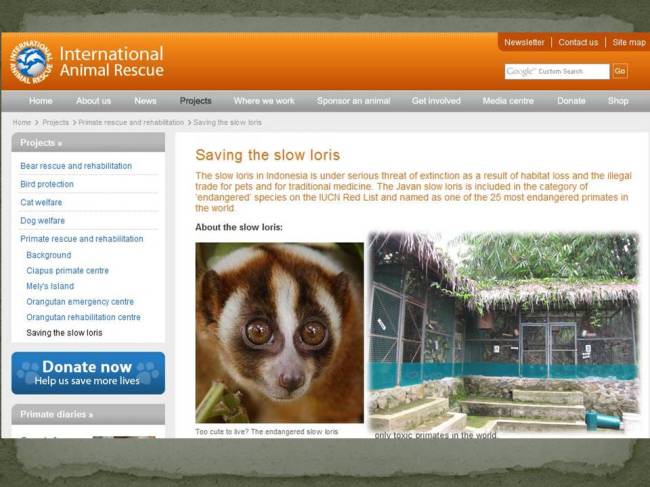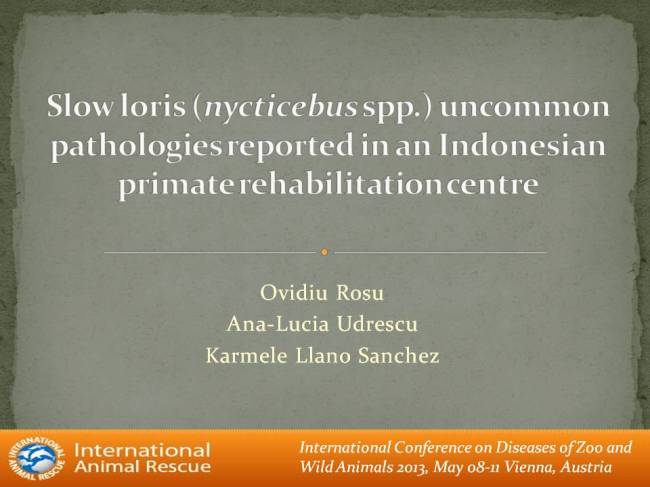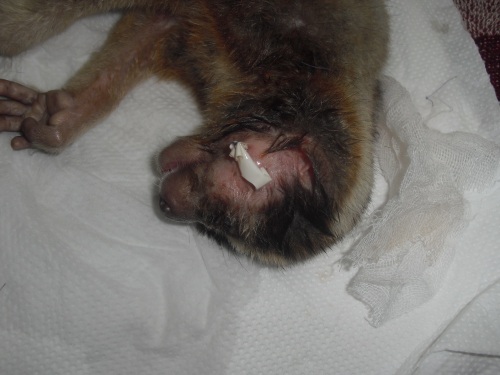Slow lorises (Nycticebus spp.) are listed as vulnerable or endangered (IUCN Red List) endemic primate species in Indonesia, heavily hunted for the pet trade. During a six-months-period of medical assistance at IAR Ciapus primate center – West Java, a series of Slow Loris uncommon pathologies were reported.
(the following is the ppt. presentation we gave at the International Conference of Diseases of Zoo and Wild Animals, 8-11 May, Vienna- Austria )

The slow loris is a small primitive nocturnal primate, the only “poisonous” primate which can excrete a toxin underneath its armpit, “deliver” it with the bite which may lead to anaphylactic shock.
When sold as pets in order to reduce the risk of bites , it is a comune practice for people to cut their sharp teeth.
The species is under serious threat of extinction as a result of habitat loss, illegal trade for pets and for traditional medicine. Because of its “cute” appearance, the illegal wildlife trade is believed to be an even bigger threat to the slow loris’s survival than habitat loss.
The Javan slow loris is included in the category of ‘endangered’ species on the IUCN Red List and named as one of the 25 most endangered primates in the world.

The NGO : International Animal Rescue has established a facility specializing in the care of slow lorises in Ciapus, West Java, Indonesia.
The team here focuses on the rehabilitation and release of the slow loris , long-tailed and pig-tailed macaques. Is the only rehab station of its kind in Indonesia. It shelters around 100 rescued slow lorises.
The centre has a fully equipped veterinary clinic, quarantine enclosures, primate socialization enclosures and a public education centre.


